Abstract
Primary cultures of mammary cells from virgin Lewis rats were seeded at 5 X 10(5) cells per cm2 in medium 199 supplemented with 10% fetal calf serum, insulin (5 microgram/ml), prolactin (5 microgram/ml), estradiol (5 ng/ml), progesterone (0.5 microgram/ml), and hydrocortisone (0.5 microgram/ml). On the second or third day of culture, cells were exposed to either 7,12-dimethylbenz[alpha]anthracene (0.1 microgram/ml for 24 hr) or N-nitrosomethylurea (80 microgram/ml for 2 hr). The cells were later assayed for transformation by transplanting 10(6) or 10(5) cells into gland-free mammary fat pads of 3-week-old female hosts. Untreated cells produced only normal mammary outgrowths when transplanted. Cells treated with 7,12-dimethylbenz[alpha]anthracene or N-nitrosomethylurea produced abnormal outgrowths in 11% of the transplants. These abnormal outgrowths ranged from rapidly growing adenocarcinoma to alveolar and ductal hyperplastic lesions. The results indicate that rat mammary epithelial cells can be transformed by exposure to chemical carcinogens in culture and thus represent a potential in vitro model for epithelial cell transformation.
Full text
PDF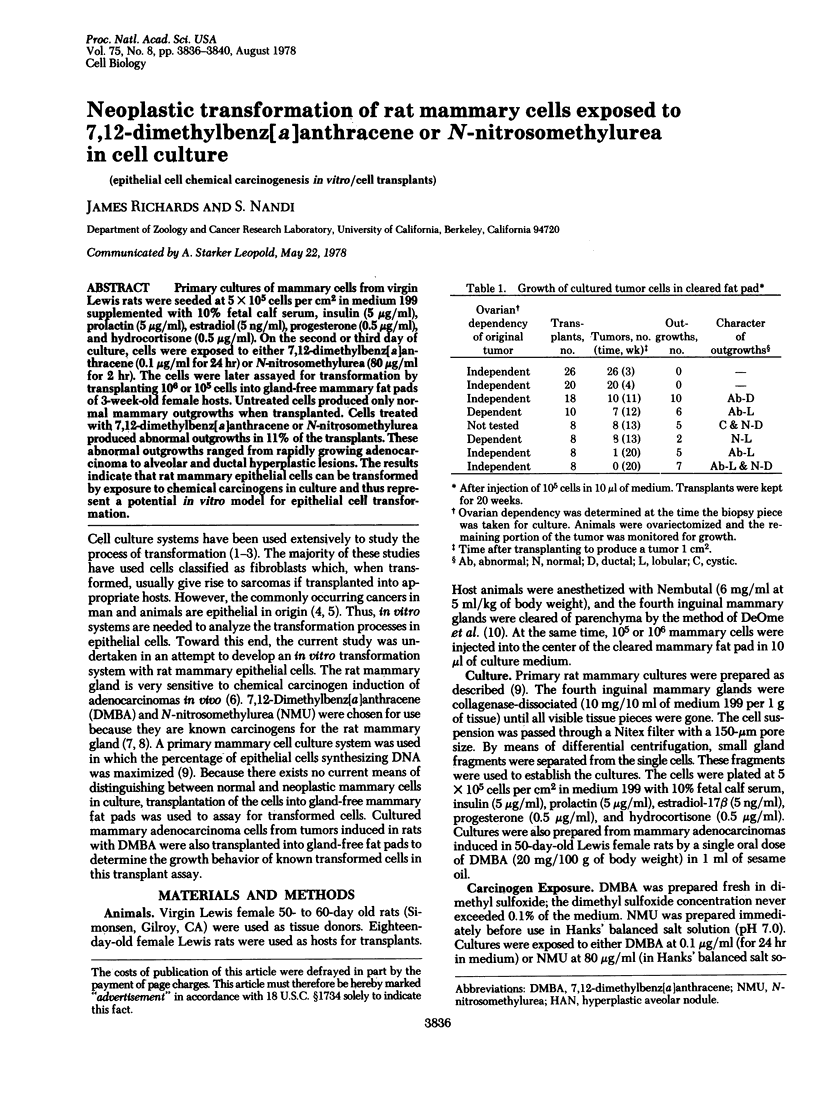
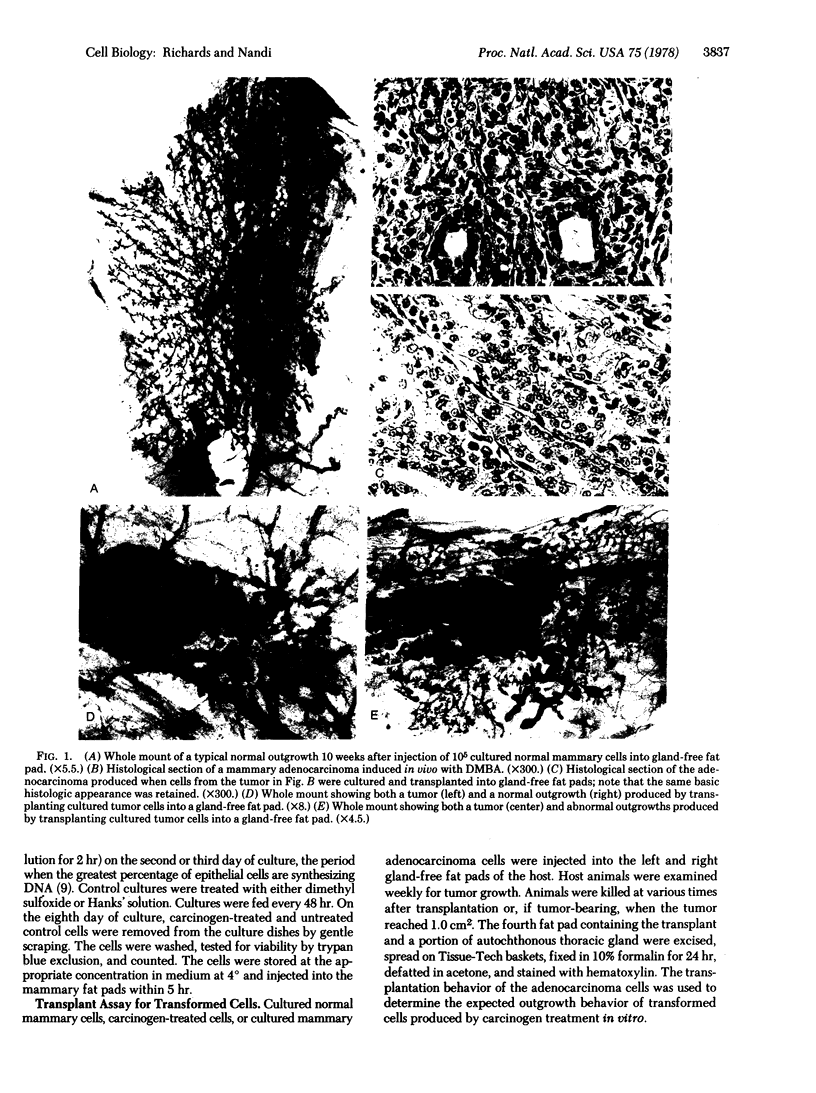
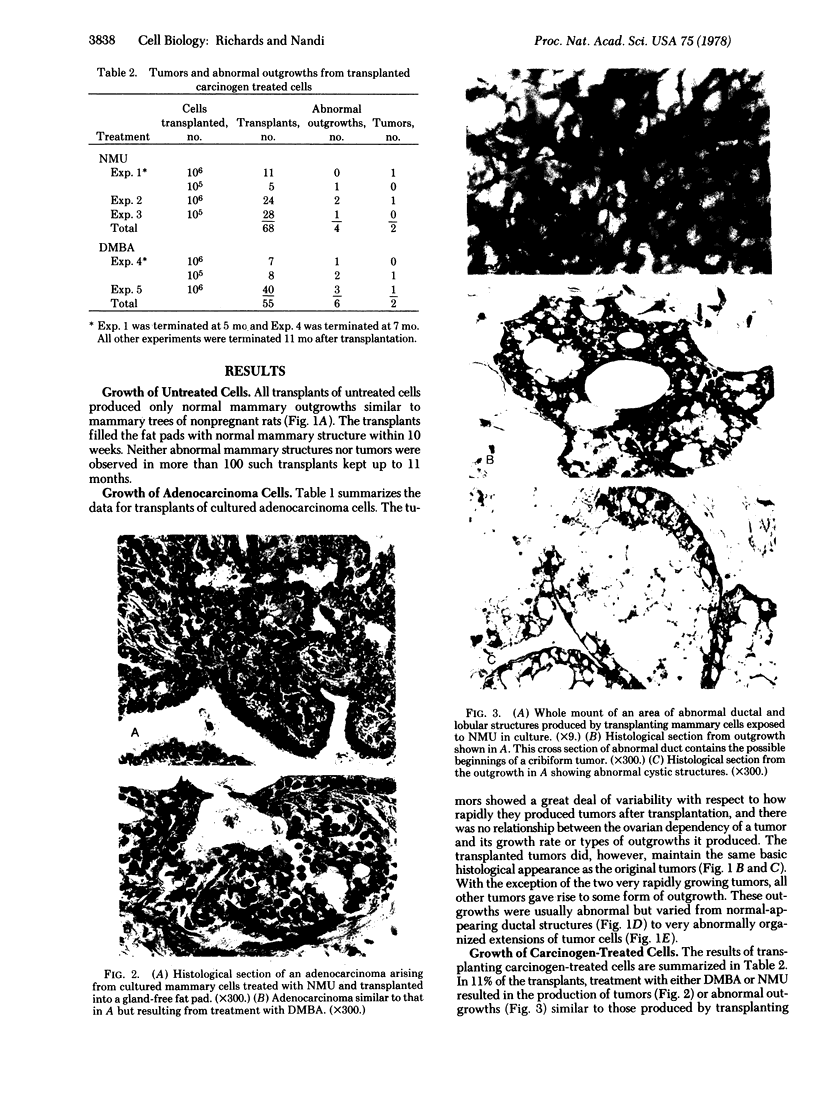
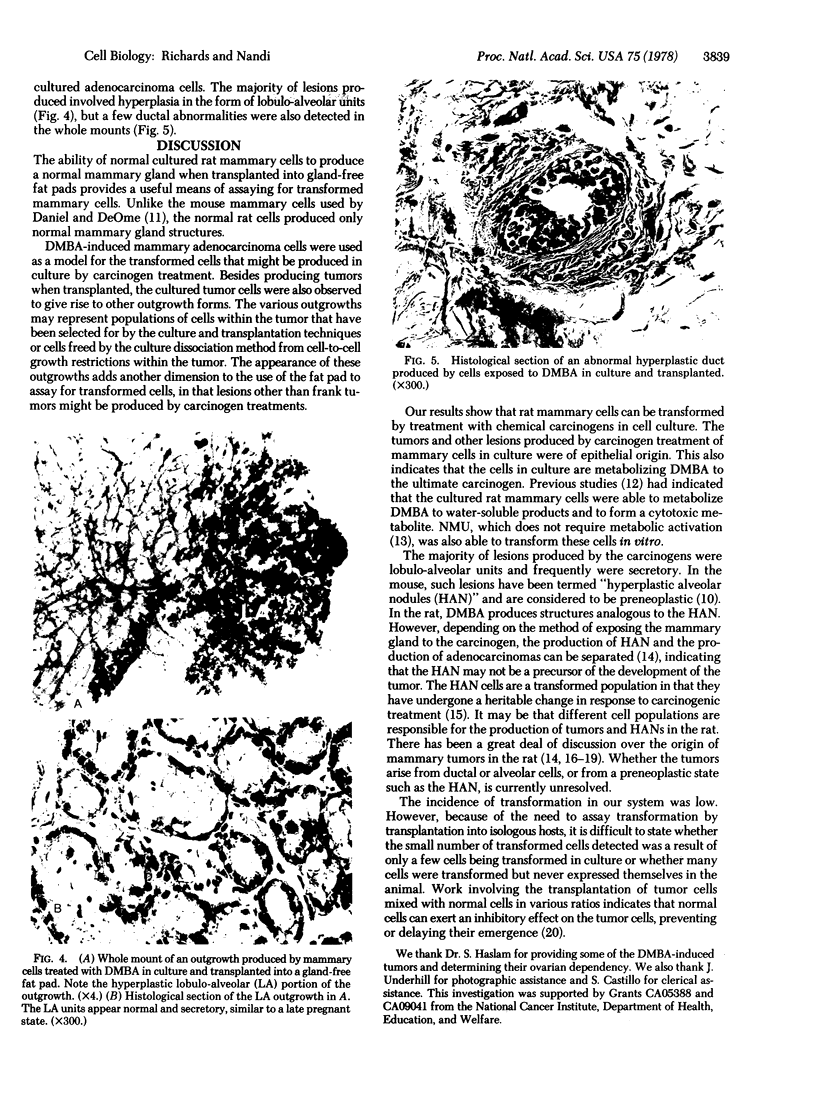
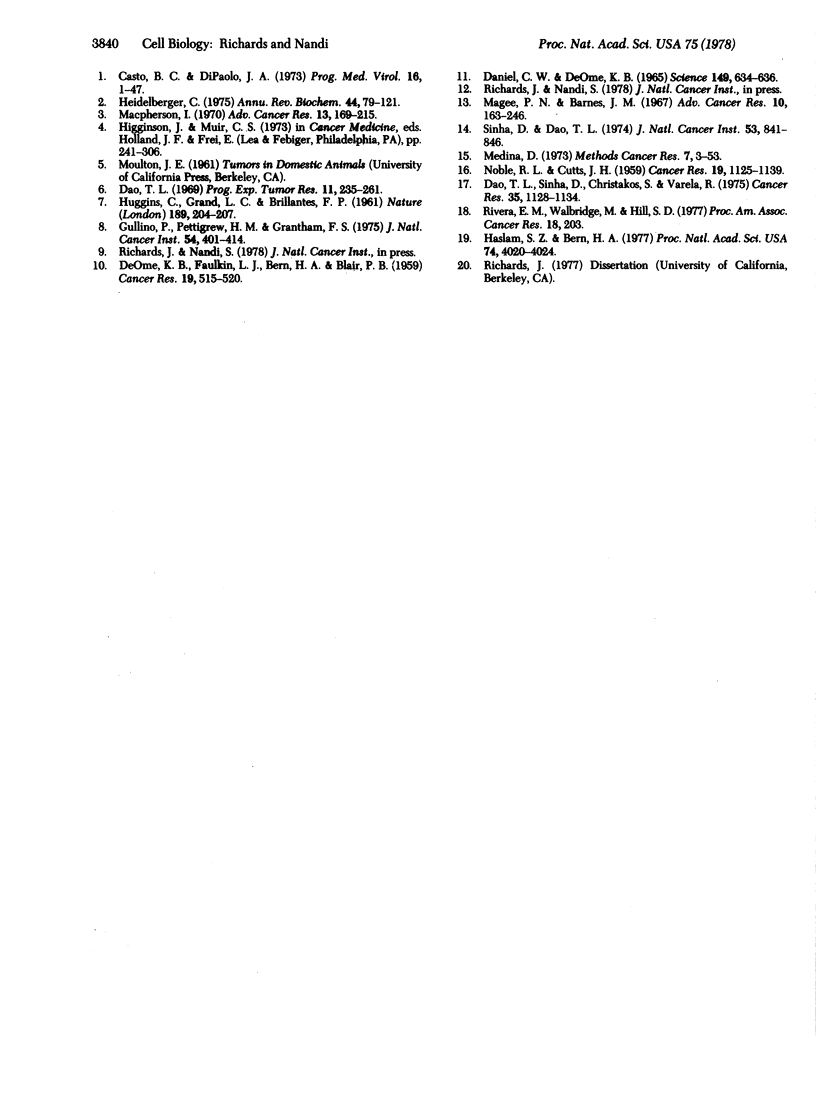
Images in this article
Selected References
These references are in PubMed. This may not be the complete list of references from this article.
- Casto B. C., DiPaolo J. A. Virus, chemicals and cancer. Prog Med Virol. 1973;16:1–47. [PubMed] [Google Scholar]
- DANIEL C. W., DEOME K. B. GROWTH OF MOUSE MAMMARY GLANDS IN VIVO AFTER MONOLAYER CULTURE. Science. 1965 Aug 6;149(3684):634–636. doi: 10.1126/science.149.3684.634. [DOI] [PubMed] [Google Scholar]
- DEOME K. B., FAULKIN L. J., Jr, BERN H. A., BLAIR P. B. Development of mammary tumors from hyperplastic alveolar nodules transplanted into gland-free mammary fat pads of female C3H mice. Cancer Res. 1959 Jun;19(5):515–520. [PubMed] [Google Scholar]
- Dao T. L., Chistakos S. S., Varela R. Biochemical characterization of carcinogen-induced mammary hyperplastic aveolar nodule and tumor in the rat. Cancer Res. 1975 May;35(5):1128–1134. [PubMed] [Google Scholar]
- Dao T. L. Studies on mechanism of carcinogenesis in the mammary gland. Prog Exp Tumor Res. 1969;11:235–261. doi: 10.1159/000391397. [DOI] [PubMed] [Google Scholar]
- Gullino P. M., Pettigrew H. M., Grantham F. H. N-nitrosomethylurea as mammary gland carcinogen in rats. J Natl Cancer Inst. 1975 Feb;54(2):401–414. [PubMed] [Google Scholar]
- Haslam S. Z., Bern H. A. Histopathogenesis of 7,12-diemthylbenz(a)anthracene-induced rat mammary tumors. Proc Natl Acad Sci U S A. 1977 Sep;74(9):4020–4024. doi: 10.1073/pnas.74.9.4020. [DOI] [PMC free article] [PubMed] [Google Scholar]
- Heidelberger C. Chemical carcinogenesis. Annu Rev Biochem. 1975;44:79–121. doi: 10.1146/annurev.bi.44.070175.000455. [DOI] [PubMed] [Google Scholar]
- Macpherson I. The characteristics of animal cells transformed in vitro. Adv Cancer Res. 1970;13:169–215. doi: 10.1016/s0065-230x(08)60166-9. [DOI] [PubMed] [Google Scholar]
- Magee P. N., Barnes J. M. Carcinogenic nitroso compounds. Adv Cancer Res. 1967;10:163–246. doi: 10.1016/s0065-230x(08)60079-2. [DOI] [PubMed] [Google Scholar]
- NOBLE R. L., CUTTS J. H. Mammary tumors of the rat: a review. Cancer Res. 1959 Dec;19:1125–1139. [PubMed] [Google Scholar]
- Sinha D., Dao T. L. A direct mechanism of mammary carcinogenesis induced by 7,12-dimethyl-benz(alpha)anthracene. J Natl Cancer Inst. 1974 Sep;53(3):841–846. doi: 10.1093/jnci/53.3.841. [DOI] [PubMed] [Google Scholar]











